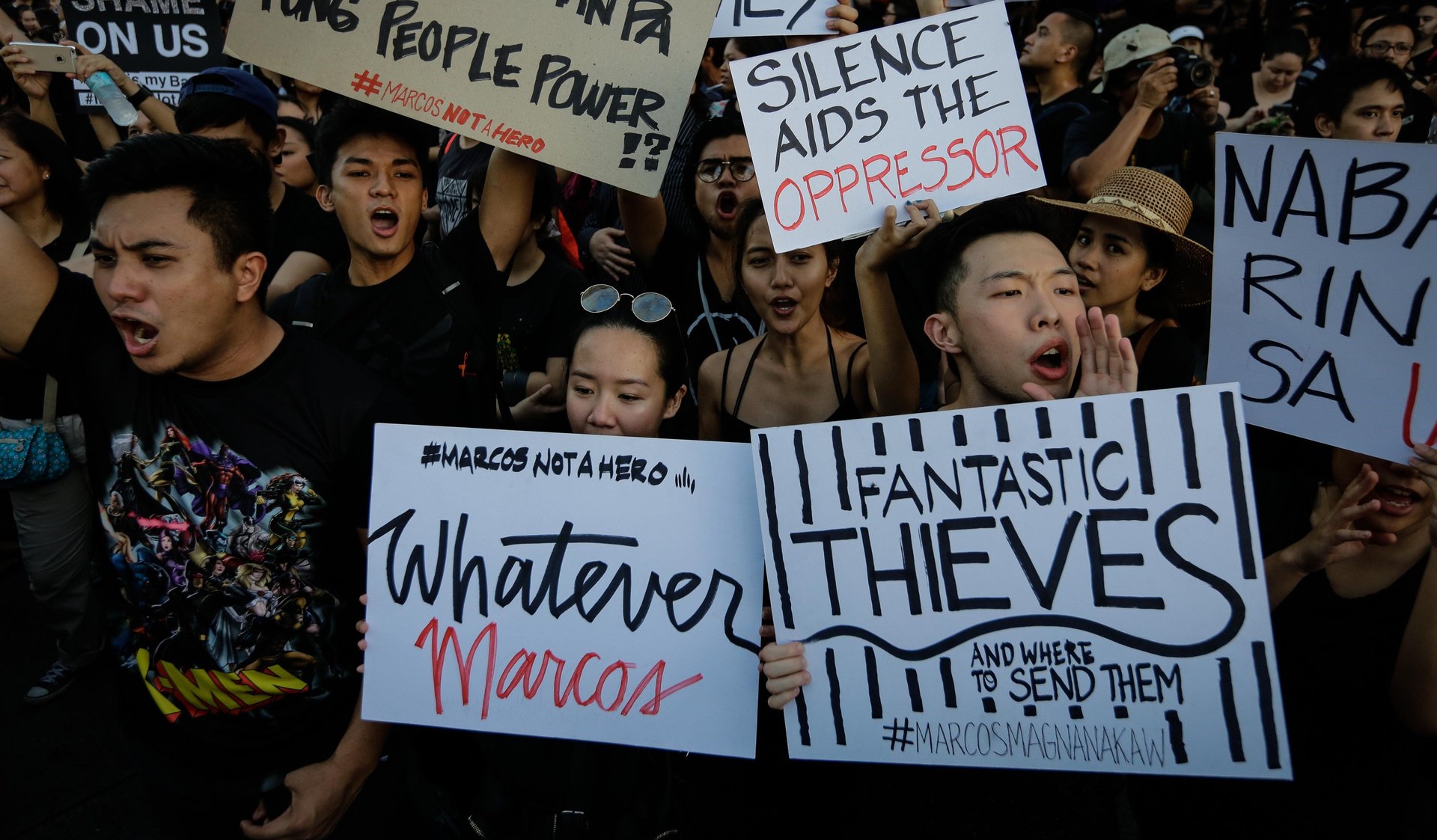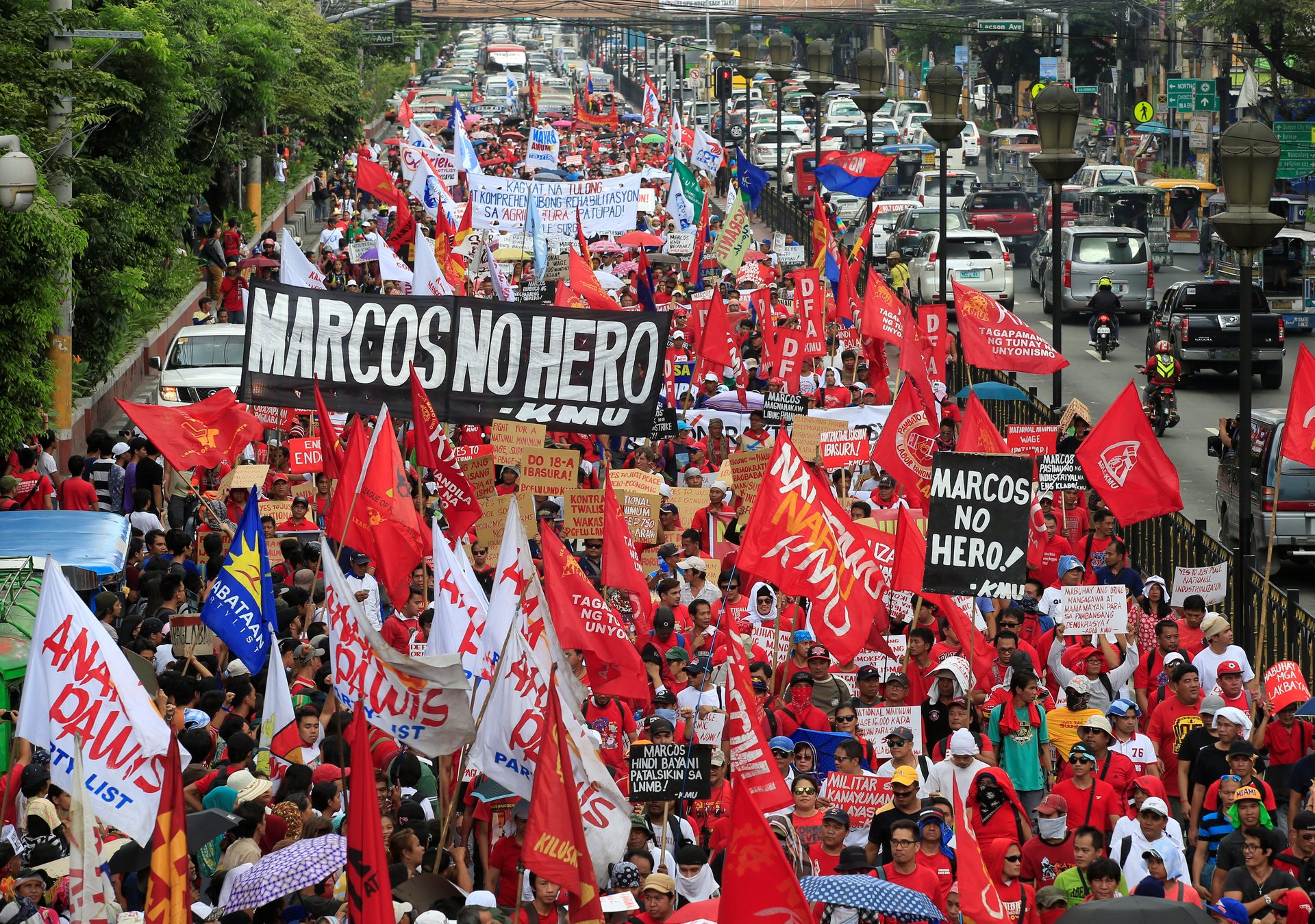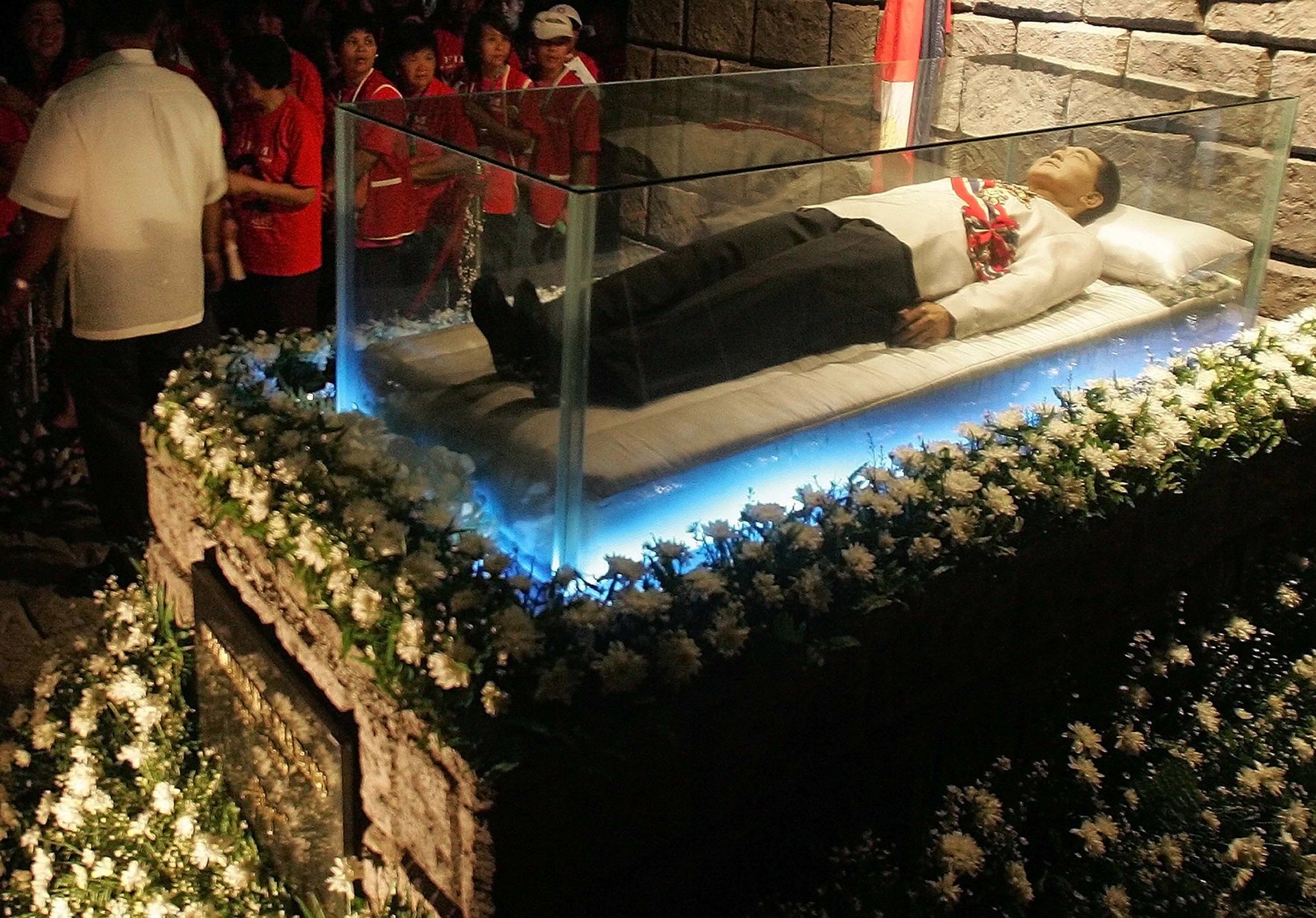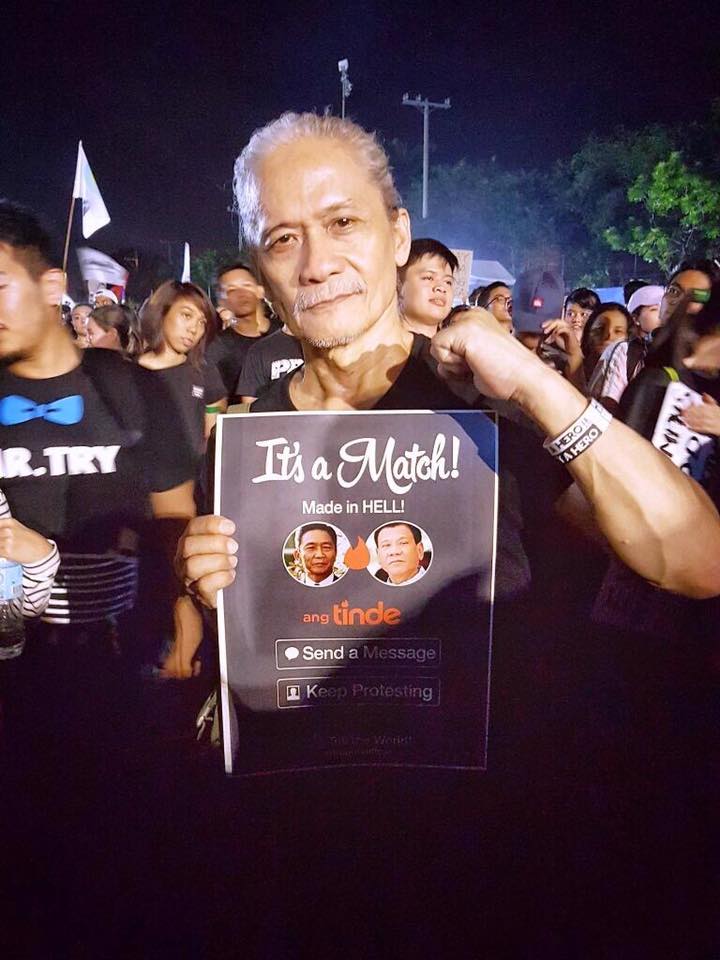Duterte and Marcos are a Tinder match “made in hell”: Scenes from the protests in the Philippines
Filipino dictator Ferdinand Marcos was given a hero’s burial two weeks ago in a controversial decision by president Rodrigo Duterte. Since then, young Filipinos have been spearheading a sustained protest movement that’s relied heavily on social media and drawn inspiration from everything from Game of Thrones to local soap operas.


Filipino dictator Ferdinand Marcos was given a hero’s burial two weeks ago in a controversial decision by president Rodrigo Duterte. Since then, young Filipinos have been spearheading a sustained protest movement that’s relied heavily on social media and drawn inspiration from everything from Game of Thrones to local soap operas.
Protests have been ongoing since Nov. 18, but the largest yet took place on Wednesday (Nov. 30), when thousands of people, many of them students, took to the streets of Manila. They mark the first mass protests against one of Duterte’s decisions since the controversial, hardline politician took office in May.

Marcos, who died in 1989, was secretly buried in the Heroes’ Cemetery on Nov. 18 in a private ceremony complete with a 21 gun salute—which was later made public by a video posted by his daughter Imee. Up until then, Marcos’s remains were on display in a museum in his home province, Ilocos Norte, because Imelda Marcos refused to bury her husband anywhere else but the cemetery (which, as its name suggests, is reserved for national heroes from patriots to presidents to artists).

Duterte said that burying Marcos with heroes’ honors would help the country heal and move beyond the divisive legacy left behind by the Marcos family’s violent and kleptocratic 21-year rule. Protestors, though, say the dictator doesn’t deserve a heroes burial, and decry what they see as historical revisionism by one strongman in favor of another—or a “match made in hell”:

The participation of young Filipinos in the protests is noteworthy because few lived through the days of Marcos’s rule, or experienced the impact of its human rights abuses and corruption. Duterte’s supporters argue protestors aren’t considering the good Marcos did for the country, and his communications secretary, Martin Andanar, dubbed them “temperamental brats” in a column.
That only seemed to have had the effect of further galvanizing the anti-Marcos voices, who have embraced the label:
The Philippines has the world’s highest rate of social media usage, according to the Pew Research Center, and the protests were organized almost entirely by social media. People have taken to the internet using the hashtag #MarcosNotAHero to air their grievances and to organize.
The young protesters’ digital savviness—and affinity for American popular culture—were on full display during the marches.
References to popular movies and television shows were par for the course:
One protester used a somewhat distorted version of a hit Justin Bieber song to express his anger:
Protestors have vowed to continue their demonstrations until Marcos’s remains are exhumed from the cemetery.